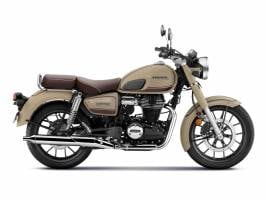Triumph Speed 400 vs RE Classic 350 vs RE Hunter: Comparison - A Royal Rumble
At the launch event of the Triumph Speed 400, the Triumph-Bajaj, who have brought the bike to, and are making to India, didn't shy away from the fact that they were ready to lock horns with Royal Enfield. After all, the J-series Classic 350 and the more recent Hunter 350 from RE, gave Enfield all the bragging rights for having given India two highly desirable retro-looking but modern motorcycles that are well within financial reach. Now Triumph aims to relegate the REs behind it with its Speed 400 which offers more in terms of quality and performance. Well, talk time is over. Time to settle this once and for all. Let's see who does what better.
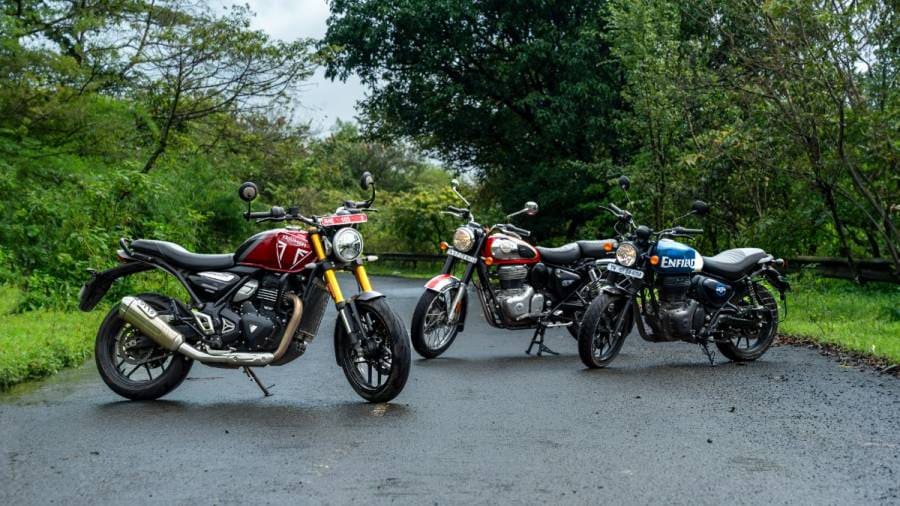
Before we begin, I should mention that in this test we haven't included the KTM 390 Duke, because there's a new model that's right around the corner or the Harley-Davidson 440, because the media bikes were taken back because they were facing a common rear brake issue. No Honda CB 350s or Jawa and Yezdis because they are yet to match the standard of quality and sales stats set by RE's hot-sellers in retro-theme displacement segment.
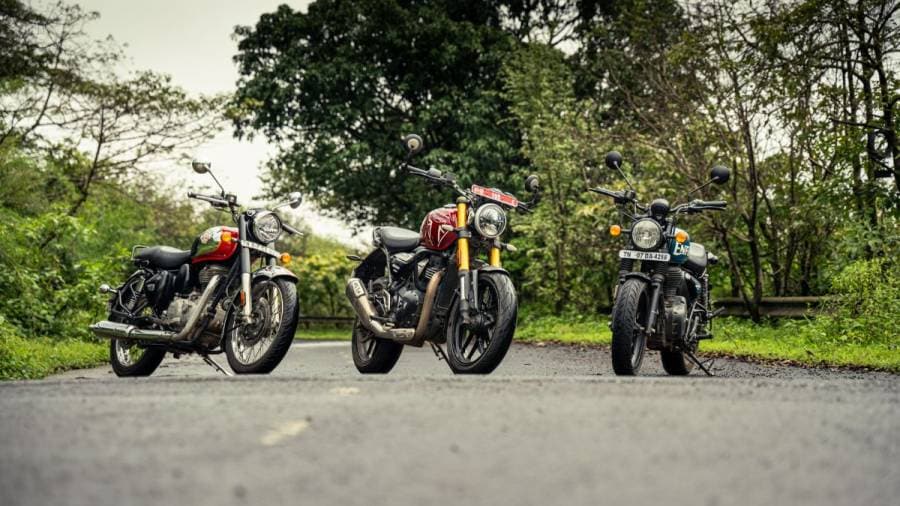
In terms of design, yes looks are indeed subjective, so I'll try to keep this part short. All three motorcycles look grand with their respective design cues, feel built-to-last and even exude great fit and finish levels with a healthy amount of RE and Triumph branded components sprinkled across. Love the heft of Classic with its headlight cap, parking lights and old-school themed instrumentation. The compactness of the Hunter makes it appear built to take on the streets.
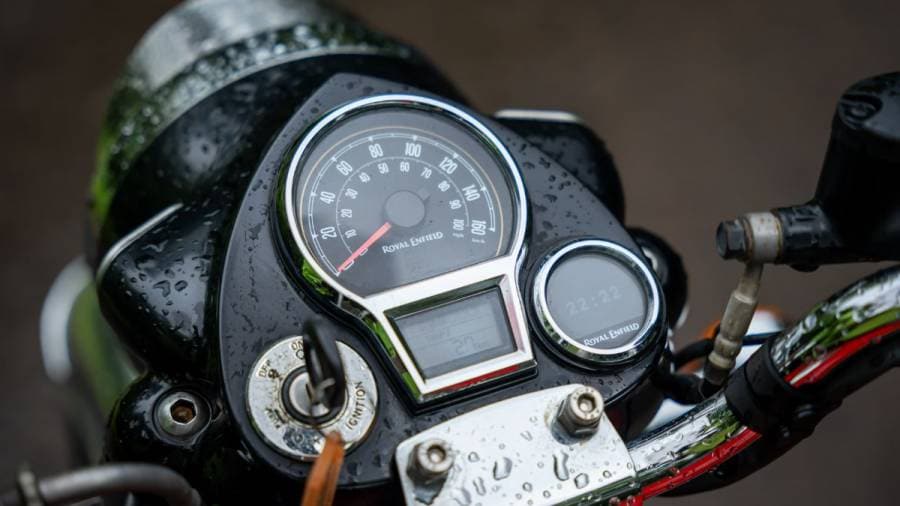 The displays of the Classic 350
The displays of the Classic 350
While the Speed 400 flexes a lean roadster stance with its subtle yet aggressive design attitude. From these three, nothing shouts 'retro' louder than the Classic 350, with the Hunter showing off more simplistic yet modern design cues. In that sense, the Speed 400 looks more on par with the Hunter, and yes Triumph could have done things a lot differently by styling it like a proper baby Bonneville, thereby throwing in some added 'classy retro' into the mix. But come to think of it, it's good that things turned out the way it did because who'd want to own a Triumph motorcycle that tried to mimic one of the REs. Each of these motorcycles has their own visual identity and they all do well to stand out in their own way.
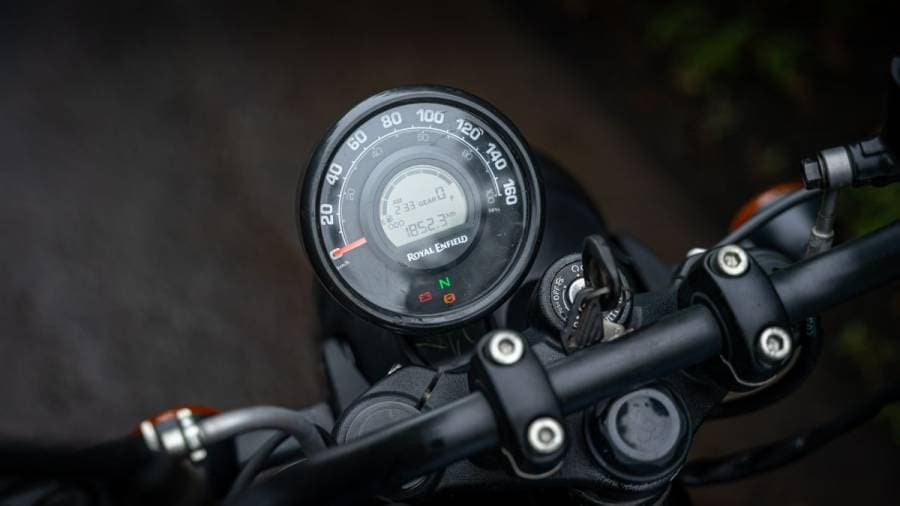 The display of the Hunter 350
The display of the Hunter 350
In terms of features, the Classic has the least amount of kit, offering a part digital part analogue instrumentation setup where you have a sweet speedo needle indicating the speed you're at, while the digital strip reads out odo, trips, fuel level and time. You do get a USB charging socket and the turn-by-turn nav pod standard with this Chrome variant too. The more basic-looking Hunter in Metro guise can be had with all of that but it sports a single offset instrumentation pod that reads out all of the above including the gear position, in true hipster style. You'll have to shell out a little extra if you want the nav pod on there.
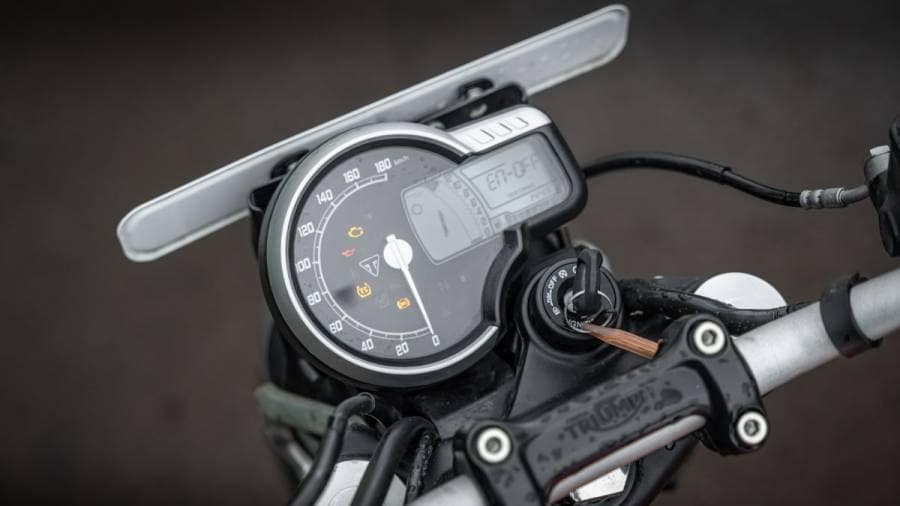 The display of the Speed 400
The display of the Speed 400
In terms of riding aids, both RE motorcycles have the option of single and dual-channel ABS, depending on what trim level you choose, and that's where the Triumph gains the upper hand. The Speed 400 gets dual-channel ABS as standard, and it also gets switchable traction control, a feature which more experienced riders will be thrilled to have on there. In addition to that the Speed 400 also gets a tachometer, average fuel consumption and DET readouts, an immobilizer and all-LED lighting which adds piles on the value-for-money factor.
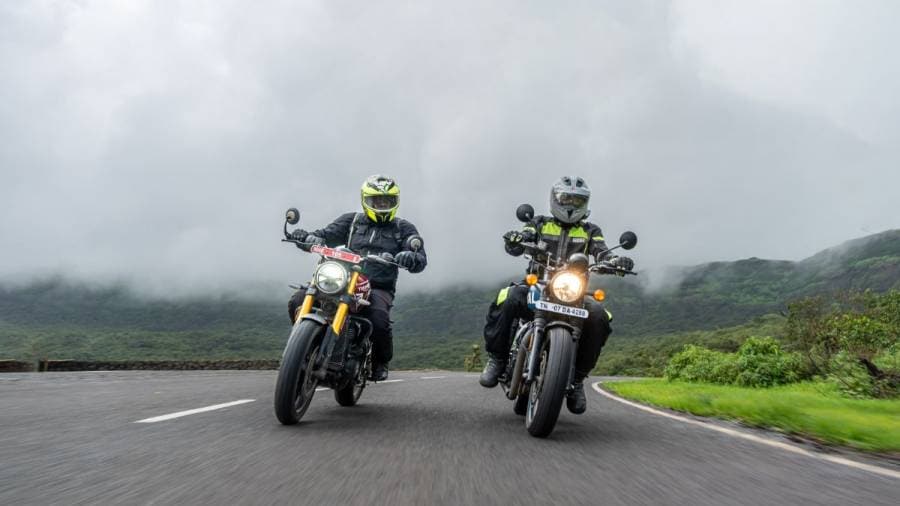
As you would expect, when it comes to ride, handling and performance, the three motorcycles out here behave very differently. But by just looking at each of them, you'd get an idea of what they are capable of doing out on the road, and each of them go about their business in a manner that you'd expect them to.
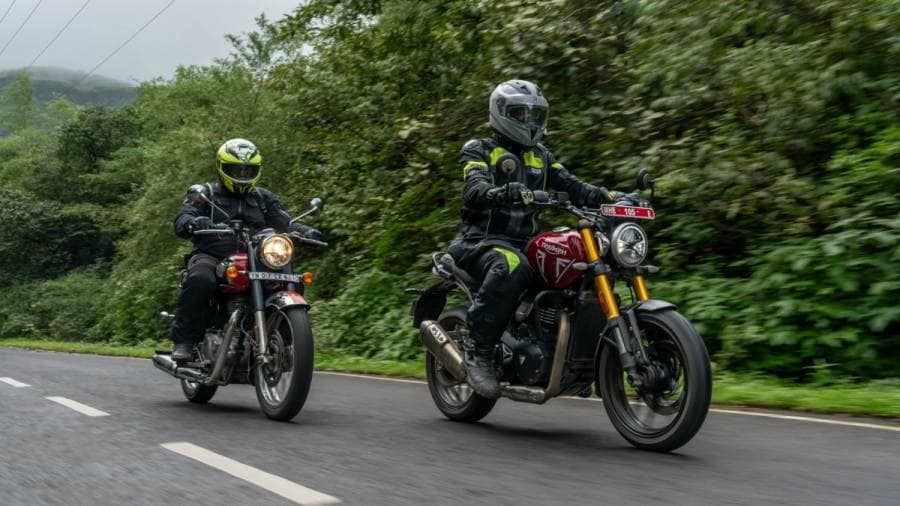
The Classic 350 looks bulky and once you get astride it rightly feels so. It's the heaviest of the lot here at 195kg kerb. It'll take you bit to get used to the way it functions as a whole, but thereafter behaves predictably and with consistency. The long-stroke 349.3cc air- and oil-cooled engine puts down a meager 20.2PS of power and 27Nm of torque, so it's nowhere close to feeling quick. But the manner in which it lets you put down all that power and torque is simply brilliant.
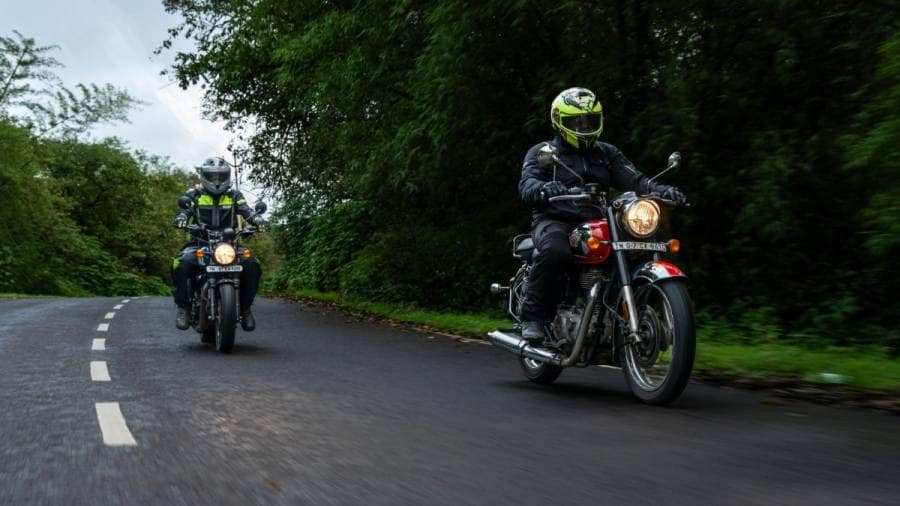
It's smooth, linear and even the riding posture the bike will make you assume and the thumping exhaust note all co-insides so well together with the retro-feel of this bike. Although it's not the most powerful motor of its time, the level of refinement, even on this test mule which has done over to 15,000kms, still feels sublime. The engine hits a sweet spot at 80kmph and you could manage this pace all day on a long tour. The twin downtube frame gives you the ability to take on long sweeping corners with ease, but quicker technical sections will be cause for some concern. But with the way the suspension holds up in relation to its seating accommodation, this is definitely the most comfortable bike of the three to be on. If you're a laid-back person who prefers to take it easy on the road, who is never in a rush to get somewhere and is openly willing to make people wait for you in case you're behind schedule, then the Classic 350 is definitely going to be your pick of this trio.
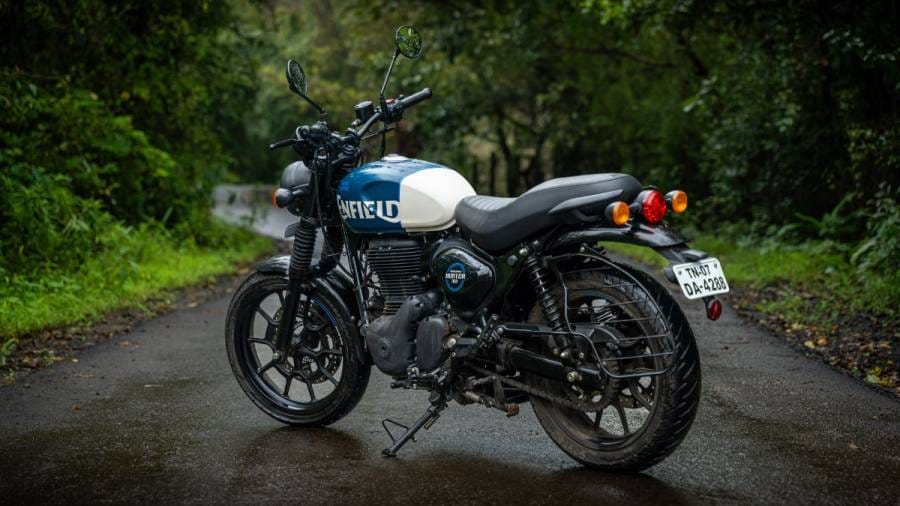
The Hunter 350 is more of a hip retro-metro machine. It houses the same engine as the Classic 350 but on the throttle, it feels a lot livelier of the two thanks to its minimalistic styling which makes it weigh about 15kg less than the classic. Its tauter proportions, the shortened chassis, the 17-inch front wheel (the first for any of the modern RE bikes) and slightly more aggressive rider triangle make it more adaptive to quicker inputs as well. Great for the city, not so much so on the highway. Because the flat-tracker-ish handlebar which will have you reaching out a bit which will make you feel caught up on long stints in the saddle. And the twin shocks at the rear are setup very stiff making you feel each and every bump you traverse over.
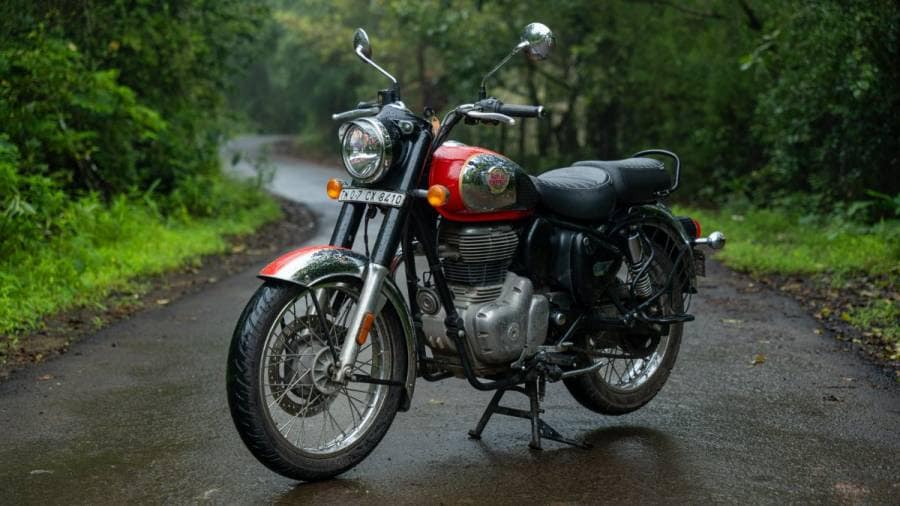
The disc brakes at both ends work better on the Hunter because it feels a lot more balanced than the Classic 350, which shifts all its weight to the front wheel under hard braking. The Hunter's clutch is quite heavy too so getting stuck in traffic that's inching forward it will be a rather painful experience. If you're a fan of RE bikes, their way of functioning and basically under 35-40 years of age, the more you'll find the Hunter appealing.
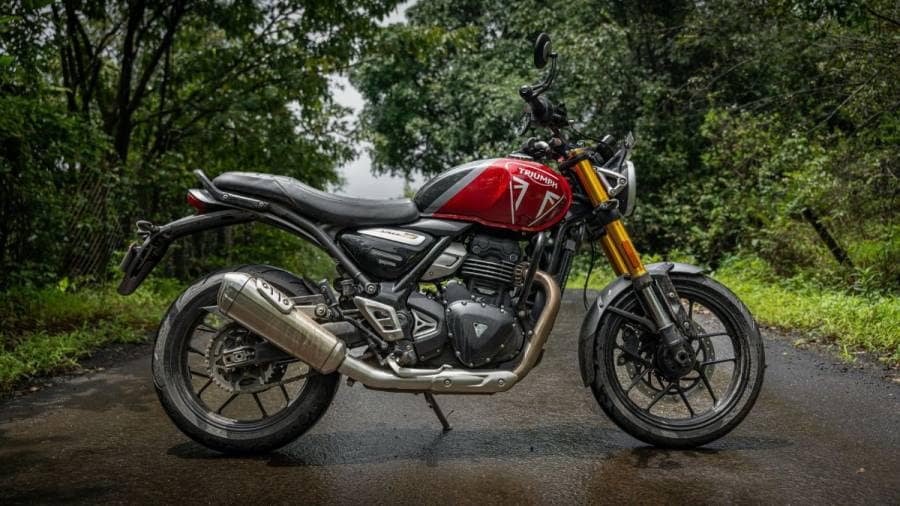
Also, the bigger your build, the more uncomfortable you'll feel on this bike, because with its tight proportions, it's seat will tend to come up short while riding two up. Like the Classic, the Hunter can easily get up to speeds of 90-100kmph, but try to go faster and it feels like you're going against what the stock bike was intended for.
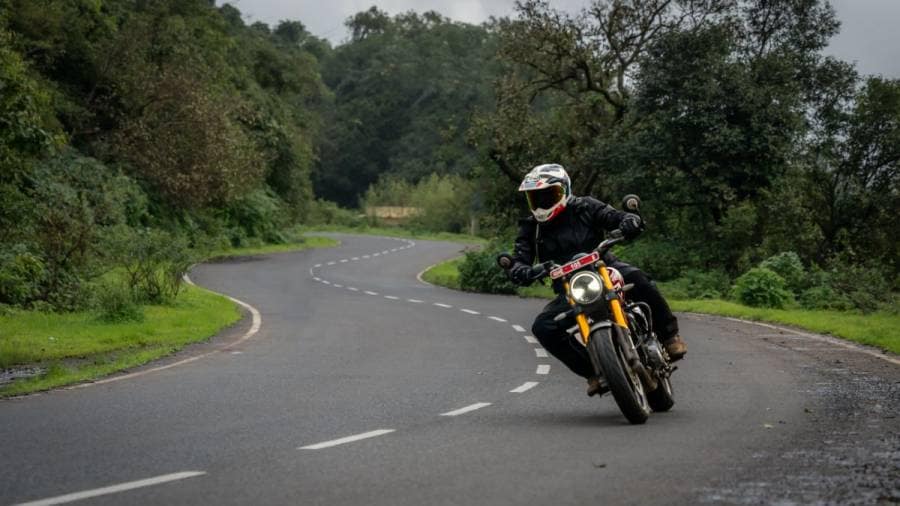
The Triumph Speed 400's engine is all-new. The four-valve 398cc, single-cylinder liquid-cooled motor. Makes about 40PS of max power and 37.5Nm of max torque. Comes mated to a six-speed gearbox. There's a decent amount of low-end torque so if you shortshift through the six-speeder, you'll be treated to a very relaxed ride experience, but once you hit the mid-range that's when this bike transitions into an absolute delight. It looks like a proper roadster and goes like one too, this Speed 400. The engine is always ready to be revved and doesn't honestly doesn't feel anywhere close to being out of place when you hit speeds above 110kmph. And there's way more to go after that. On performance alone it would be more of a match with something like the current Gen 2 390 Duke. On paper the Triumph Speed 400 weighs 5kgs less than the Hunter, which is unbelievable, because it feels way lighter as soon as you get going.
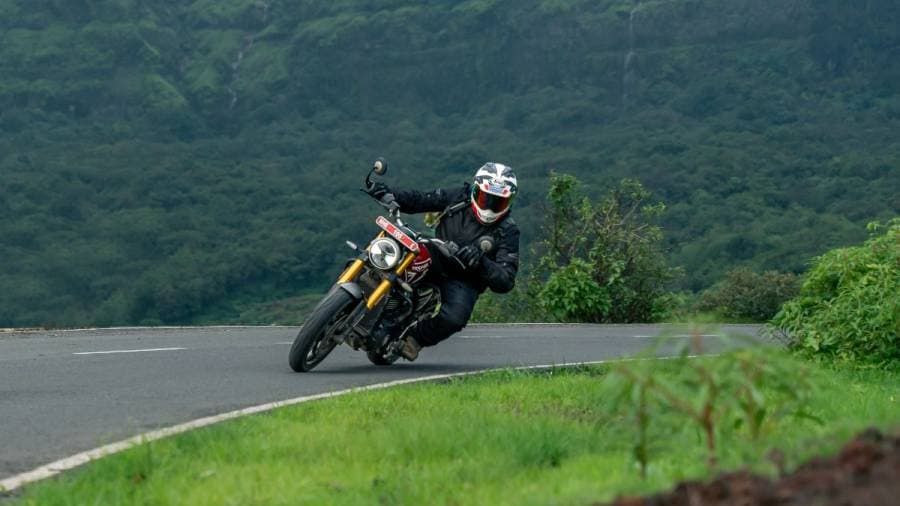
The level of engine refinement is great, the gearbox is slick too. It's a complete contrast to the other two we have out here today. The gearing with the six speeder makes this one of the most tractable engines in its class. You could be doing 100kmph in fifth, drop pace to about 30kmph and not have to shift gears, let alone employ the clutch. Of course if you needed to carry out an overtake you'd have to do both. The USD fork up front is a league ahead of the agile Hunter and while the ride isn't plush as the Classic, it does handle everything you can put it through with finesse. The triumph gives you a brilliant blend of both worlds - old-school retro charm, and downright performance.
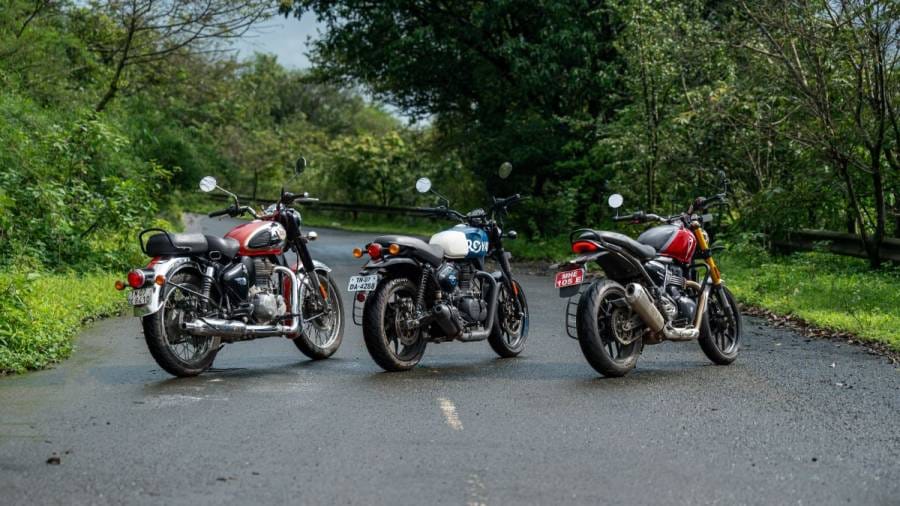
The Triumph has won this bout by technical knockout, setting the benchmark in terms of quality and features, and at its pricing of Rs 2.33 lakh (ex-showroom), it's set to revolutionize the segment and make its competition do better with what it brings to the table. There certainly is a lot of promise for this motorcycle to grab some of RE's market share in the sub-500cc retro-themed motorcycle segment. But to what extent exactly remains uncertain because even with a motorcycle like the Classic 350 which is priced at Rs 1.93 2.21 lakh, it has helped build a reputation for what was and still remains a desirable machine and the brand RE itself, and with that comes a good number of loyalist. And RE appear to have hit the nail on the head with the Hunter priced at Rs 1.50 1.75 lakh, making it a motorcycle that's built to a budget by RE standards, but it rarely feels so in terms of a top-quality product.

All motorcycles out here today have some standout characteristics that make them unique and desirable. The Triumph Speed 400 is relatively expensive, but it's the performance, features and feel-good ownership factor that overcome it all. It really has set a new benchmark in its segment and is one that the incoming competitors will have to keep an eye out for. The Classic 350 still has its retro charms and ride quality that will swoop many off their feet even today, while the Hunter 350 is the most affordable, agile road-going RE motorcycle that welcomes consumers to the RE brand and ownership experience.
Starts Rs 1,49,900
349cc
5-Speed
20.20
27.00
-NA-

